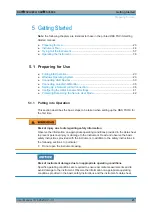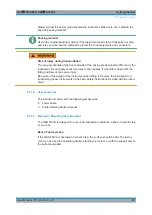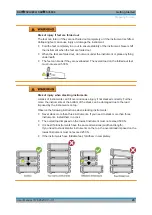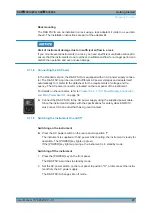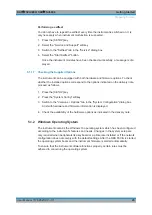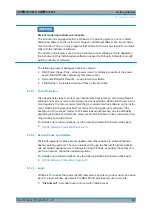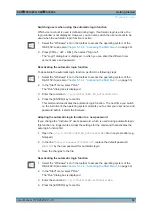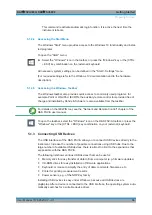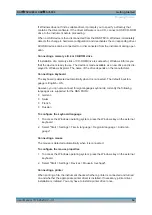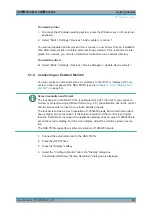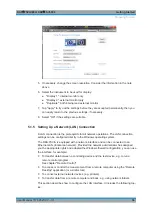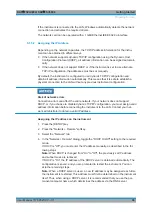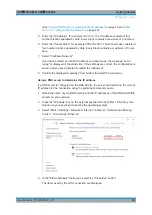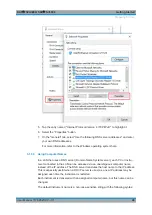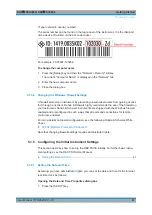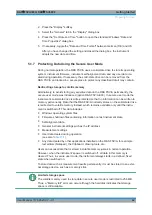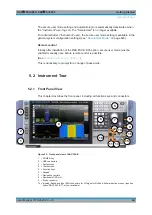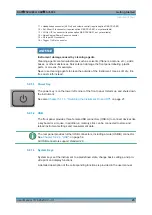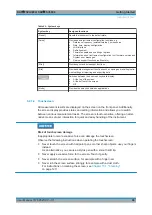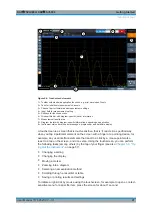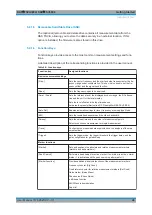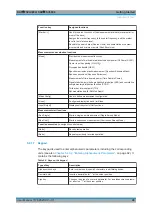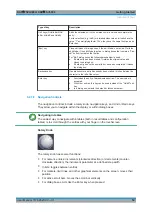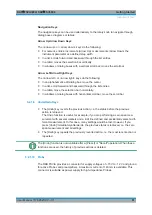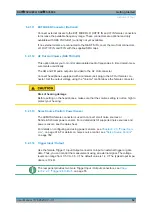
Getting Started
R&S
®
FSVA3000/ R&S
®
FSV3000
37
User Manual 1178.8520.02 ─ 01
●
Chapter 5.1.5.1, "Connecting the Instrument to the Network"
●
Chapter 5.1.5.2, "Assigning the IP Address"
Note that only user accounts with administrator rights can configure LAN networks.
LXI
The R&S
FSV/A supports the LXI core features. LXI gives you direct access to the
LAN settings described below.
For further information on the LXI interface, refer to
Chapter 13.5.4, "LXI Settings"
5.1.5.1
Connecting the Instrument to the Network
There are two methods to establish a LAN connection to the instrument:
●
A non-dedicated network (Ethernet) connection from the instrument to an existing
network made with an ordinary RJ-45 network cable. The instrument is assigned
an IP address and can coexist with a computer and with other hosts on the same
network.
●
A dedicated network connection (Point-to-point connection) between the instru-
ment and a single computer made with a (crossover) RJ-45 network cable. The
computer must be equipped with a network adapter and is directly connected to the
instrument. The use of hubs, switches, or gateways is not required, however, data
transfer is still performed using the TCP/IP protocol. You must assign an IP
address to the instrument and the computer, see
Chapter 5.1.5.2, "Assigning the IP
Note:
As the R&S
FSV/A uses a 1 GBit LAN, a crossover cable is not necessary
(due to Auto-MDI(X) functionality).
Risk of network failure
Consult your network administrator before performing the following tasks:
●
Connecting the instrument to the network
●
Configuring the network
●
Changing IP addresses
●
Exchanging hardware
Errors can affect the entire network.
► To establish a non-dedicated network connection, connect a commercial RJ-45
cable to one of the LAN ports.
To establish a dedicated connection, connect a (crossover) RJ-45 cable between
the instrument and a single PC.
Preparing for Use

